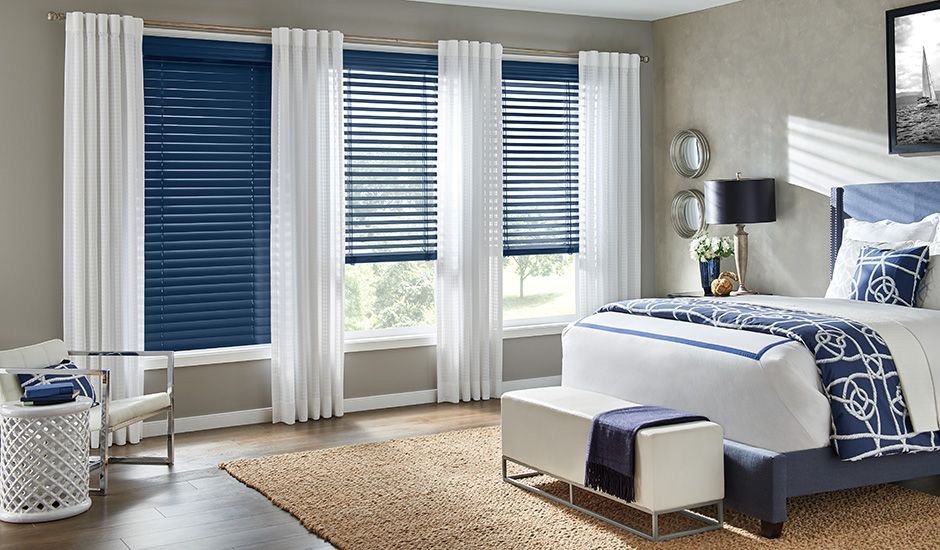5 Signs That It's Time to Replace Your Outdated Window Treatments
Window treatments, blinds, shades, drapes, or shutters perform an essential function of light control, privacy, savings, and looks for your house. Over time, even the best quality covers no longer function, break down, or go out of fashion. Whether it is time or not to change or update them is what you may be worried about, so here are five signs that your window coverings require a makeover.

1. Lower Control of Light and Privacy
Brittle blinds with curved slats or sagging shades no longer block light as effectively or provide privacy. If it allows in blinding light or passersby, not only is it maddening, but it can also ruin furnishings, wallpaper, or flooring. New roller sheer shades or light-filtering fabric shades provide much more control, blocking glare but not views and privacy. Perhaps it is time to look toward replacements of wiser material and superior construction.
2. Over-Damage or Over-Fading
UV light slowly bleaches and fades the color and fabrics. When your drapes, shutters, or blinds are fraying, yellowing, or wearing out on the material, they’re no longer protecting your interiors or showing their best faces. New treatments now contain UV protective features to protect fabric, furniture, artwork, and decor from the destruction brought by sunlight, making renewal a smart investment.
3. Higher Bills and Energy Waste
Worn or thin coverings let heat seep in during summer and escape during winter, driving up energy costs. Modern shutters and shades are engineered with better insulation, helping control room temperature and reducing energy consumption. If you’ve noticed your HVAC working harder, upgrading to energy-efficient window treatments could save money and improve comfort.
4. Outdated Style or Poor Fit
Fashion changes, such as the drapes in your family room. Worn, frayed, or sagging treatments, particularly ill-fitting, mismatched, or faulty ones, will be depressing to a room’s look. Yours could be ill-fitting drapes, stiff shutters, or mismatched blinds. A well-coordinated facelift can provide a new image. Custom window treatment designs created especially for your own windows provide finer looks and a finished look.
5. Won't Work or Safety Problems
Bulged cords, rigid slats, or therapies that no longer glide smoothly up or down are not only inconvenient but also dangerous. Animals and children are especially in danger around older corded machines. Newer motorized or cordless machines provide smoother operation, improved safety, and many times smart home system integration. Replacing is simpler and safer than repairing if your therapies aren’t functioning.
Decision Making: Decide to Fix or Replace
Deciding whether or not to fix or replace your existing window treatments isn’t always simple. The majority of the homeowners are left with nothing but that same question in mind: do I fix it, or do I buy new? The decision depends on how bad the damage is, economics, aesthetics, safety, and long-term advantages. Let’s discover what considerations will lead you to the best choice.
Minor Repairs That Still Work
Not every issue requires replacement in its entirety. If you merely have one damaged slat for your blinds, a loose but otherwise good working shade cord, or a loose mounting clip, then repair is a perfect and inexpensive solution. In these cases, a same-day repair will have you back on the road again without the cost of buying from scratch.
The repairs are worth it if your treatments are not so ancient yet and still in proportion with the appearance of your house. Spending small amounts of money on repairs extends their lifetime, and you can keep on enjoying them.
When Repairs Become Too Expensive or Too Frequent
While an occasional repair can be tolerated, repeated fixing is expensive. If you’re repainting your shutters over and over or your drapes are always ripping at the seam, you’re likely spending more on repairs than the treatments cost you. Replacing them entirely keeps you out of the loop of quick-fixing and ongoing expense.
Aside from expense, repeated breakdowns are annoying. Constant re-pivoting of bowed blinds or fiddling with jammed cords is annoying. Eventually, it is just easier to replace the entire system for easy everyday use.
Safety and Functional Issues
The second concern to be discussed is safety. The older corded ones are dangerous to children and pets. In case your treatments are not doing what they are meant to, are sticky, or will not stick, replacement would be safer and more reliable.
Modern alternatives like motorized window shades or lightweight blinds not only address the issue of safety but also save time. Modulating the light factor, enhancing privacy, and having higher comfort are all a matter of the push of a button.
Energy Efficiency and Long-Term Savings
Old window treatments don’t cost much; they’re just a thorn in your neck. They are also a thorn in your utility bill. Thin film or loosely operating blinds let cold seep out in the winter and warm air out in the summer, causing your air conditioner and heater to work overtime.
The use of energy-saving window treatments maintains the inside temperature constant and conserves a few hundred dollars in the long run. While the replacement cost may appear to be more, the energy savings do not take long to recover the cost.
Practical Tips When Replacing Window Treatments
- Measure accurately: Have treatments cut to your window measurement for a perfect fit and function.
- Select a proper style for every room: Bedrooms can have room-darkening drapes; living rooms can have light sheer shades or modern shutters.
- Select energy efficiency and UV protection for long-term value.
- Avoid smart or cordless functionality not for amenities, but for long-term comfort and protection.
- Organize a professional consultation: They will evaluate your needs, suggest the appropriate material and design, and schedule professional installation.
Conclusion
Choosing a window treatment Company that has reached the end of its useful life adds coziness, safety, and aesthetic appeal to your house. It’s probably time to look into more contemporary options like custom blinds, shades, drapes, or shutters, items made to look and perform better if you’re observing fading, functional issues, outdated aesthetics, energy inefficiency, or safety concerns. For ideas and advice, go to Meticulous Blinds, find custom solutions for your room, and see the difference that comes from a professional measurement and fitting.
FAQs
1. Can damaged old blinds be repaired rather than replaced?
Yes, if minor, such as a lost slat. But recurring problems or old designs typically make replacement a better option.
2. How frequently are window treatments replaced?
On average, every 7–10 years, based on sun exposure, quality, and usage.
3. Do motorized choices require wiring?
Some do, but most new systems are battery-operated and simple to install.
4. How do I select the correct style for every room?
Consider the function of the first bedroom privacy, office glare abatement, and living room elegance. A consultation can help make the proper decision.
